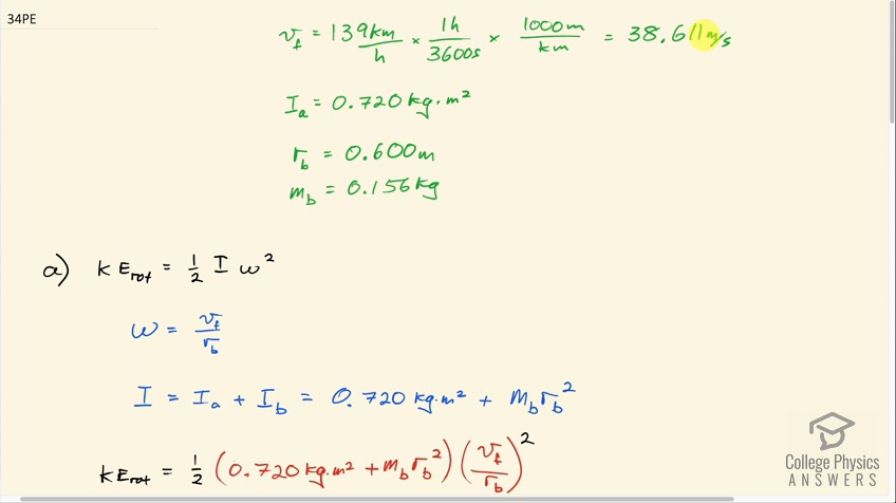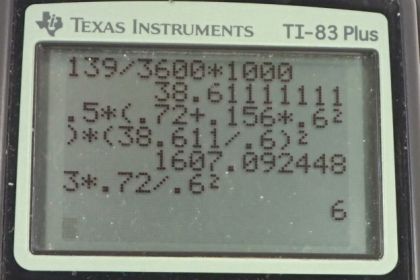Solution video
OpenStax College Physics, Chapter 10, Problem 34 (Problems & Exercises)

Calculator Screenshots
Comments
where did you get the mass of the ball from the question to solve for just part a? I se it in part B but wouldn't it be 1490 without having to use the mass if not yet revealed?
In part b, what happened to theta = pi/2? It doesn't show up in the equation after both sides were divided by r.
Hi djab, thank you so much for spotting this! The final answer in the video should be divided by . I have made a note in the final answer section and corrected the calculator screenshot.
Thanks again and all the very best,
Shaun
I'm confused because your screenshot for part A says 1607.092448 but you put the answer as 1610. Was that a typo?
Hi tdevin, no typo here, but thanks for asking. There are meant to be only three significant figures in the answer, so 1607.09... rounds to 1610. The zero in the "one's" place in 1610 is not normally considered significant, though it would be if it was written as . The correct final answer in scientific notation would be
All the best,
Shaun



